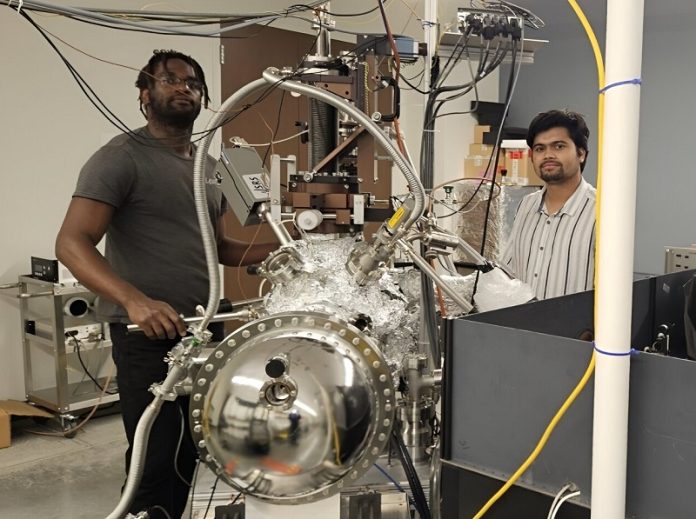
Solar energy is essential for a clean energy future, but traditional silicon solar panels have drawbacks—they’re expensive and difficult to install on curved surfaces.
To solve these problems, researchers have been developing alternative materials for solar energy harvesting.
One promising alternative is organic semiconductors, which are carbon-based, abundant, cheaper, and environmentally friendly.
“These materials can reduce the cost of producing solar panels because they can be applied to various surfaces using solution-based methods, similar to painting a wall,” said Wai-Lun Chan, an associate professor of physics and astronomy at the University of Kansas.
“They can also be tuned to absorb specific wavelengths of light, which can be used to create transparent or colored solar panels, making them ideal for next-generation green buildings.”
While organic semiconductors are already used in the display panels of cell phones, TVs, and virtual-reality headsets, they are not yet common in commercial solar panels due to their lower efficiency.
Traditional organic solar cells have a light-to-electricity conversion efficiency of about 12%, compared to 25% for silicon solar cells.
However, a new class of organic semiconductors called non-fullerene acceptors (NFAs) has shown a significant improvement, pushing efficiency closer to 20%. Despite this advancement, the reason for their superior performance was not well understood.
In a breakthrough study published in Advanced Materials, Chan and his team discovered a microscopic mechanism that helps explain the high efficiency of NFAs. The team included graduate students Kushal Rijal, Neno Fuller, and Fatimah Rudayni, and they collaborated with chemistry professor Cindy Berrie.
Lead author Rijal used a technique called “time-resolved two-photon photoemission spectroscopy” (TR-TPPE) to track the energy of excited electrons with incredible precision. “In these measurements, Kushal observed that some excited electrons in the NFA gain energy from the environment instead of losing it, which is unusual,” said Chan.
“Typically, excited electrons lose energy to their surroundings, like a hot cup of coffee cooling down.”
This surprising process occurs on a microscopic scale due to the quantum behavior of electrons, which allows an excited electron to exist on multiple molecules simultaneously. This quantum effect, combined with the Second Law of Thermodynamics (which states that entropy, or disorder, always increases), causes the electrons to gain energy.
“In most cases, heat transfers from hot objects to cold ones, increasing total entropy,” said Rijal. “But we found that in specific nanoscale structures of organic molecules, the usual direction of heat flow is reversed to increase entropy. This reversed heat flow allows neutral excitons to gain heat from the environment and separate into positive and negative charges, which can generate electrical current.”
The team believes this entropy-driven charge separation mechanism is key to the improved efficiency of NFAs in organic solar cells. Understanding this mechanism could help researchers design new nanostructures to enhance the performance of energy conversion devices.
Moreover, the KU team thinks this discovery could lead to more efficient solar cells and help design better photocatalysts for solar-fuel production, which uses sunlight to convert carbon dioxide into organic fuels.



